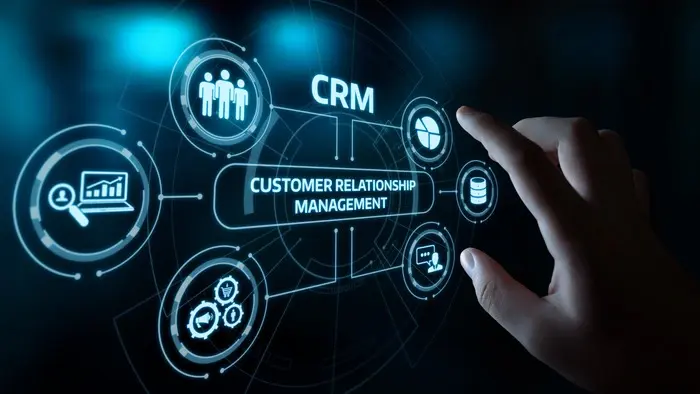Help Your Club Work Smarter, Not Harder with HubSpot's Free Tools
Private club managers and membership directors face a common challenge: maintaining strong relationships with potential members while efficiently...
In 1987, Randall Smith from Florida Marketing International, Inc. created a tutorial on how to use Microsoft Word, which is now posted on YouTube with the title, “The Most Boring Video Ever Made”. It still garners a lot of views, likely from insomniacs. However, I’m certain the audience at the time valued that information, especially those whose companies dropped a PC on their desk and told them to use it!
We see a similar scenario with Customer Relationship Management (CRM) onboarding. For those in the private club industry unfamiliar with a CRM, it’s a combination of methods, approaches, and technological tools employed by membership teams to enhance sales operations and generate important reports that help businesses reach revenue goals.
Similar to the private club industry, those working in senior living communities are often unfamiliar with CRM platforms. While membership directors drive new members, sales teams in senior living communities focus on increasing census, or the number of residents. Peggy Scoggins, founder of Adept Senior Living Solutions, has spent the better part of her career helping senior living communities improve their sales and marketing processes. Scoggins has been involved in every phase of CRM implementation, spanning from assessments and selection to sales training and coaching. However, she emphasizes that user adoption is the most important factor in successful CRM adoption.
“Select a tool that works for you and is not a burden on you,” advises Scoggins. Remember, new software platforms can be intimidating, especially for those less tech-savvy. We fear what we don’t understand and CRMs can vary in complication. Remember, cost does not equal value and some more expensive platforms offer tools that will never be used and could overcomplicate necessary features. Complexity and confusion are barriers so find a tool that helps “keep it simple!”
While many platforms come with default settings “out of the box”, Factors such as the number of keystrokes users make to complete a task, the value of all tools offered, and customization of the platform should be considered when selecting a CRM. The CRM should not force a user to change their sales system or process but should enhance and work within it. Otherwise, your membership director won’t understand the value, which leads to underutilization. Look for ways to automate redundant tasks, set up templates for common workflows, create dashboards, and functions to make life easier.
Scoggins pointed out that the lack of technical expertise is typically not a factor in user adoption and anyone can be trained. Hands-on training is critical and works best in-person or virtually with cameras on to enhance an open learning setting.
If you have multiple people at your club that will go through CRM training, remember, you can only go as fast as your slowest learner. So encourage your “super users” to rise and help others once training is complete. Another option is splitting CRM onboarding and training into working sessions and then conducting check-ins to avoid fatigue.
When it comes to data, if garbage goes in, garbage comes out. If users are not documenting their activity or are entering inaccurate data, club leadership will not have the necessary analytics. What’s more, leads could be lost or forgotten, new prospective member opportunities might not be tracked, and new prospect conversions can’t be analyzed.
In most businesses, in and outside the private club industry, CRMs are replaced. This is often not because the CRM isn’t capable, but because users did not adopt the new processes. It’s not uncommon for organizations to lose staff during implementation because the team simply doesn’t understand it. Aside from the CRM investment, if leads aren’t tracked and managed, the cost of acquiring that lead is money wasted. And, ideal leads that are not sales-ready could go into a black hole. Marketing dollars are misspent without data to make decisions.
When templates and automation are customized for your specific needs, tasks take less time, productivity increases, and users realize value. If the CRM aligns with your club’s needs, utilization of other technologies such as calendars and operational systems improves, especially with clear standard operating procedures. It might allow staff to work virtually, which improves employee retention and creates work-life balance which can be hard to find in the private club industry.
General managers and board members like clear, easy-to-understand information, and membership directors spend valuable time collecting data and plugging it into spreadsheets. Customized sales and marketing dashboards are key to helping decision-makers analyze key metrics that provide insight into club revenue opportunities. Membership and catering teams can quickly quantify their customer base and know where ideal prospects originate. Lead indicators like website visits and email open rates inform club leadership which prospects to spend more time on.
Proper training will make or break the adoption of a CRM platform in any organization. In-person training is always preferred, however, Employees have become much more accustomed to virtual training. The key is to ensure that remote and on-site staff have easy access to hands-on training. Peggy’s motto is, “Tell me and I’ll forget, show me and I’ll remember, have me do it and I learn.” Ongoing training workshops are also helpful in reinforcing lessons learned and new applications. Selecting a CRM or implementation partner that can serve as a help desk is also incredibly helpful.
One of the most important aspects of a successful CRM implementation is repetition. Working in the CRM every day, reinforcing the processes and protocols that have been established, connects your team to this powerful technology. However, even with that, ongoing coaching can be essential. Just as it is in senior living communities, ongoing training, and coaching for the club’s leadership team is vital. Scoggins says working with decision-makers to review real-world analytics and scenarios helps them use their CRM to execute more effectively. She advises looking ahead at the key metrics, or leading indicators, that impact the goal you are seeking. This is essential in tracking the right data to help meet the goal.
Scoggins says incentivizing team members can be an effective way to encourage user adoption. Clubs could choose to incentivize users by increasing compensation, additional PTO, or offering a bonus. This can improve not only adoption but overall employee satisfaction.
Implementing a CRM is a huge investment in time and money so key stakeholders should be involved in the decision-making process, throughout onboarding, and during implementation. Ideally, club leadership should be using it as well. In the 21st century, a CRM is not a nice-to-have; it’s a must-have. Once set up, test, tweak, and maintain the functionality - create a standard operating procedure that can be updated and modified over time. It should evolve with changes in employee responsibilities so that it’s not only adopted initially but incorporated into their processes for maximum return on the CRM investment.
Remember, a CRM is not just a tool—it's a fundamental component of modern business strategy.

Private club managers and membership directors face a common challenge: maintaining strong relationships with potential members while efficiently...

Let’s be honest—would you play 18 holes with just a putter? Of course not. But when you manage your membership pipeline without a sales-focused CRM,...

As a marketing agency specializing in private clubs, we've seen how the right technology can significantly impact membership growth. Every private...